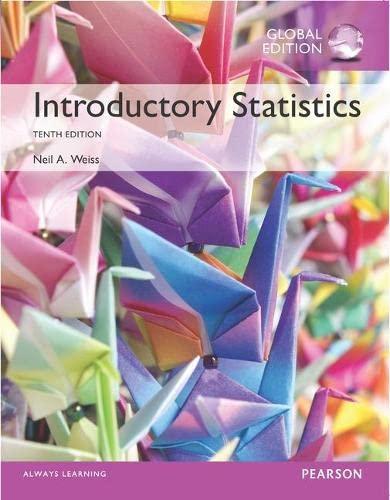Dice. When two balanced dice are rolled, 36 equally likely outcomes are possible, as depicted in Fig.
Question:
Dice. When two balanced dice are rolled, 36 equally likely outcomes are possible, as depicted in Fig. 4.1 on page 171. Let A = event the red die comes up even, B = event the black die comes up odd, C = event the sum of the dice is 10, and D = event the sum of the dice is even.
a. Compute P(A), P(B), P(C), and P(D).
b. Compute P(B | A).
c. Are events A and B independent? Why or why not?
d. Compute P(C | A).
e. Are events A and C independent? Why or why not?
f. Compute P(D | A).
g. Are events A and D independent? Why or why not?
Fantastic news! We've Found the answer you've been seeking!
Step by Step Answer:
Related Book For 

Question Posted:





